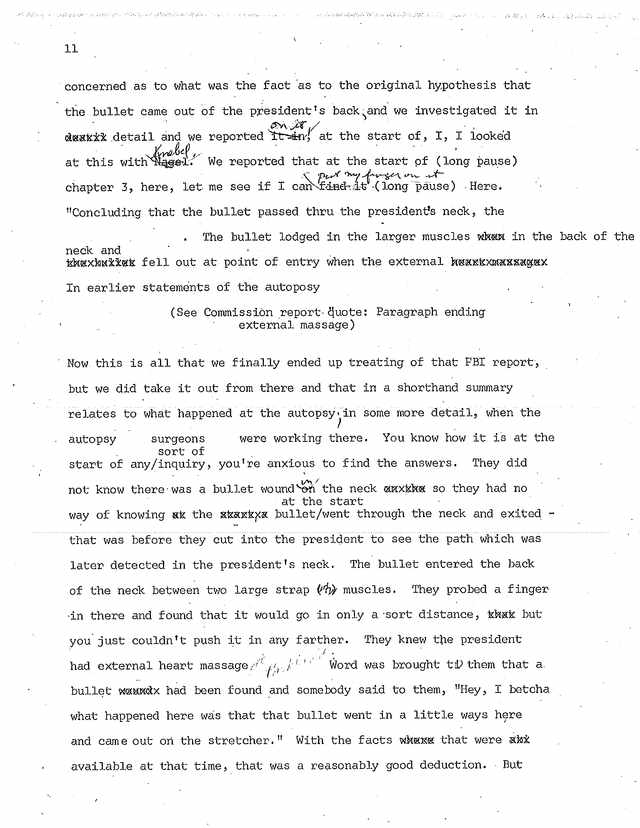

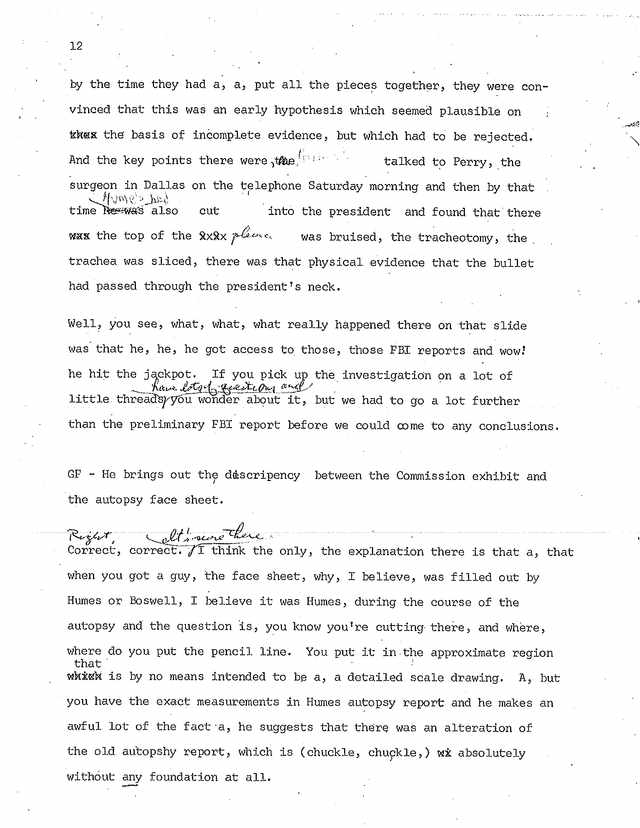
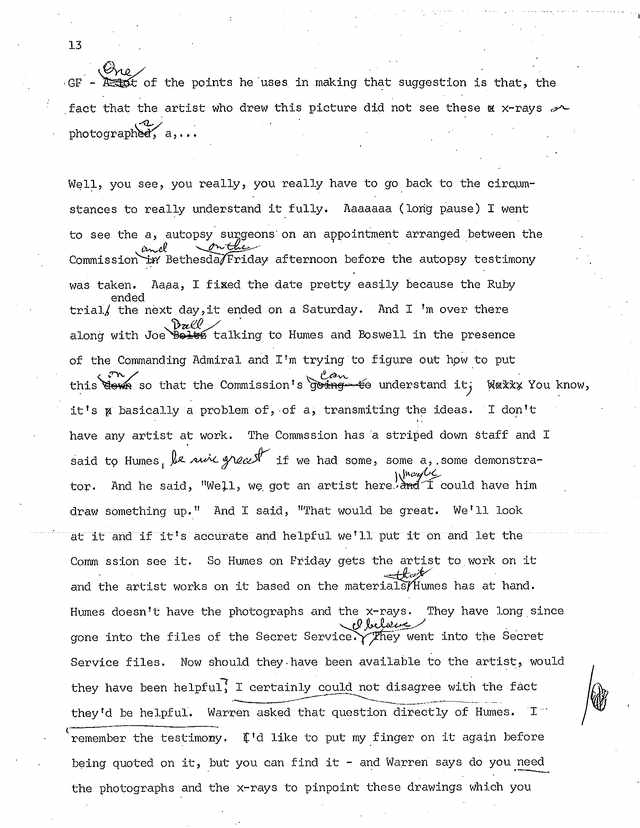
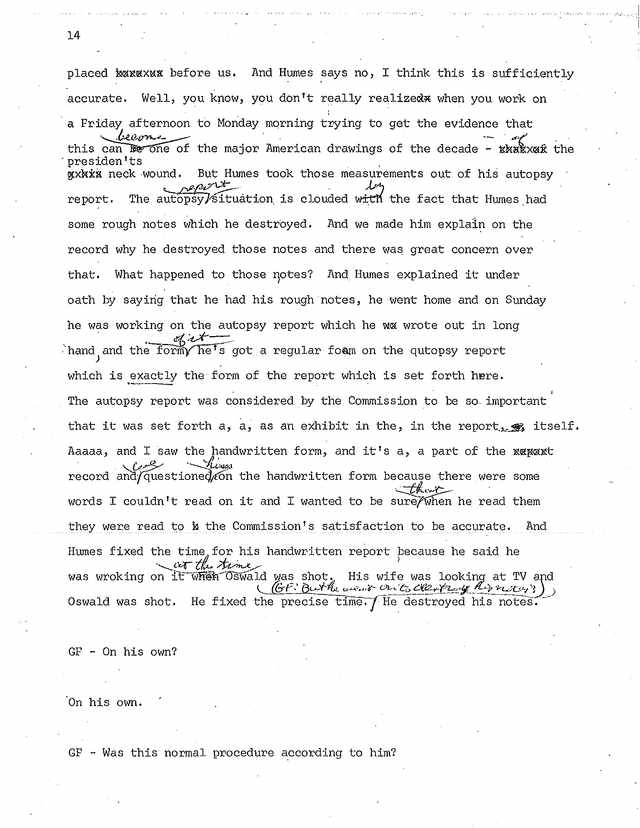
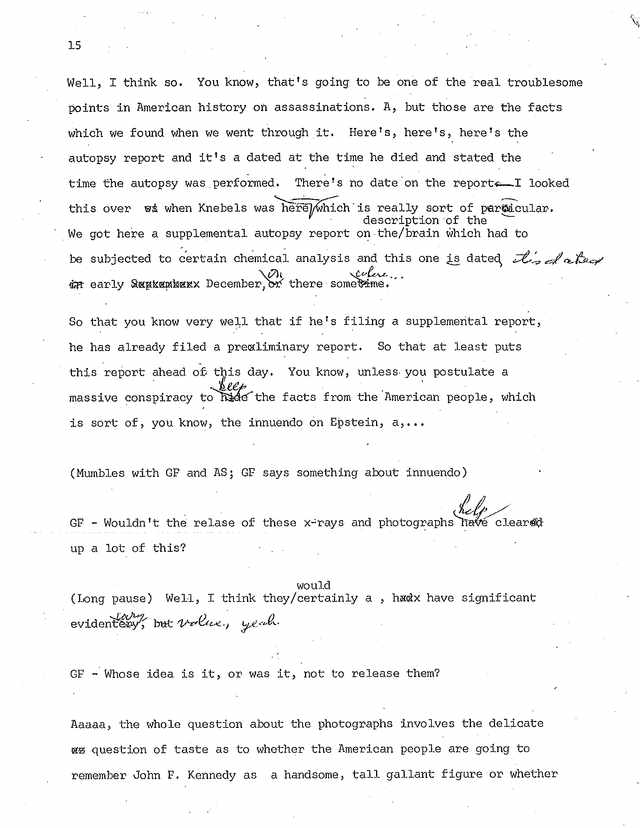
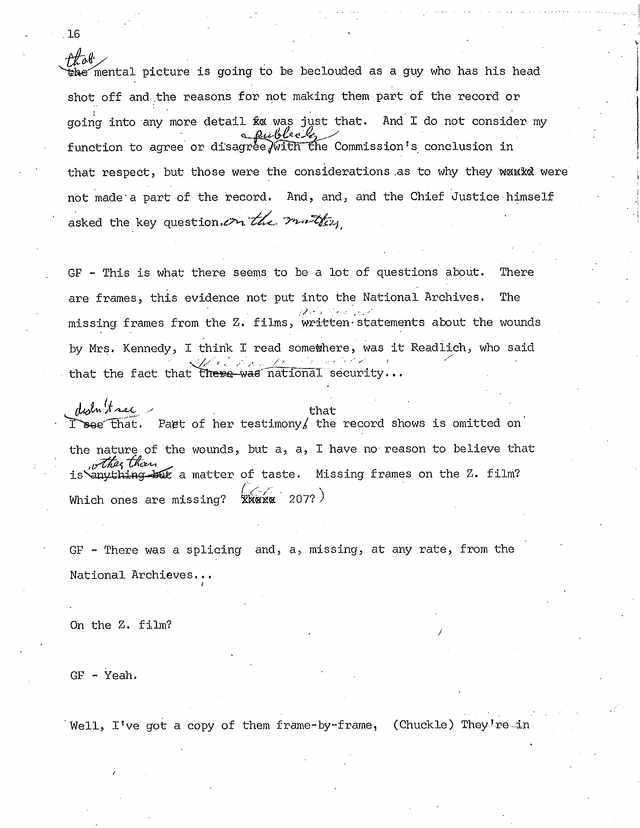
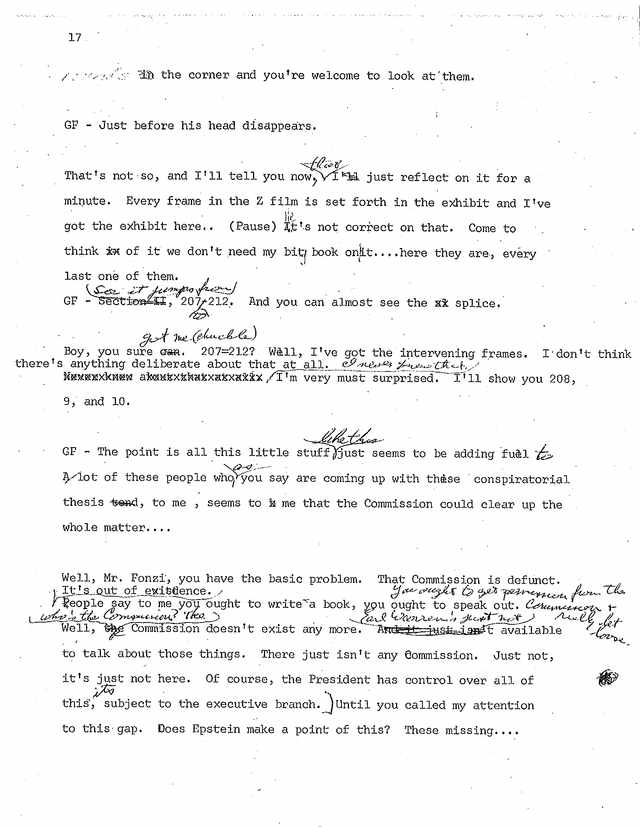
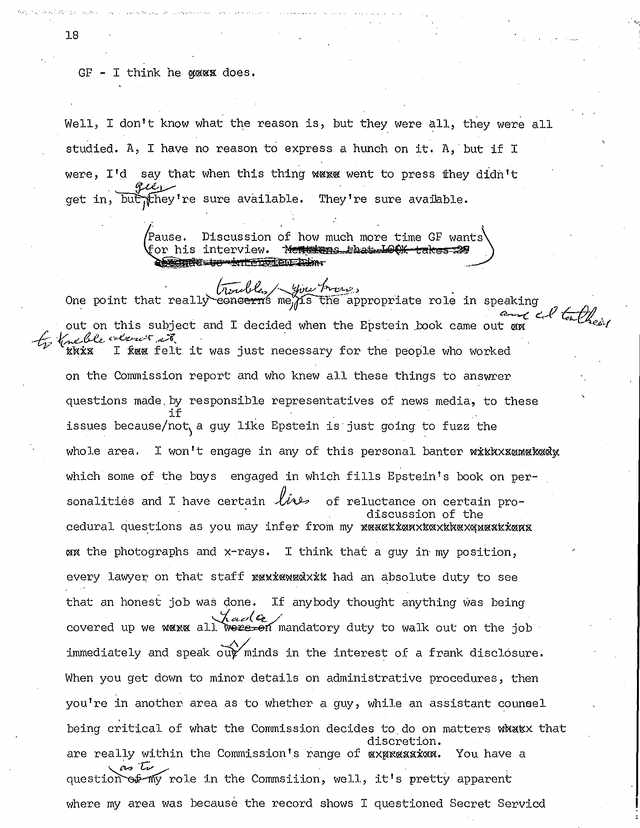
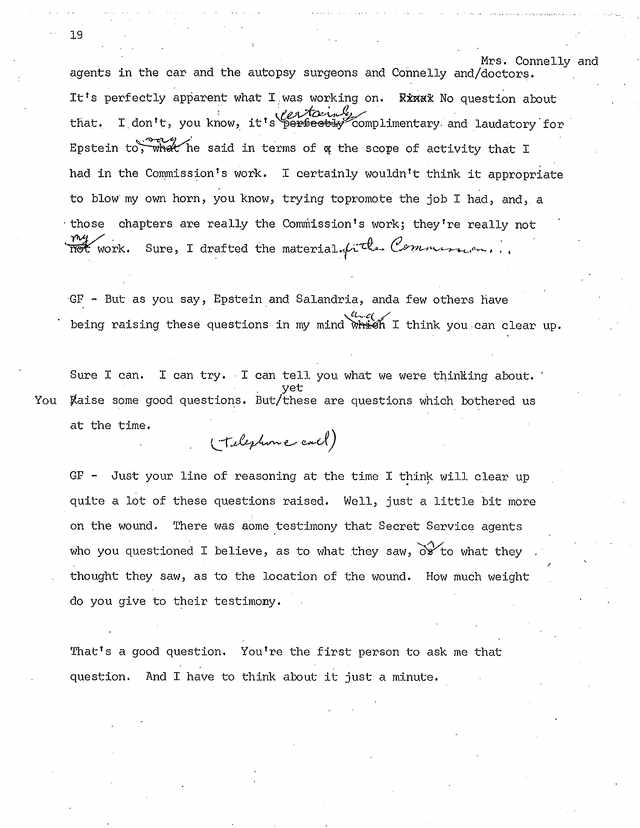
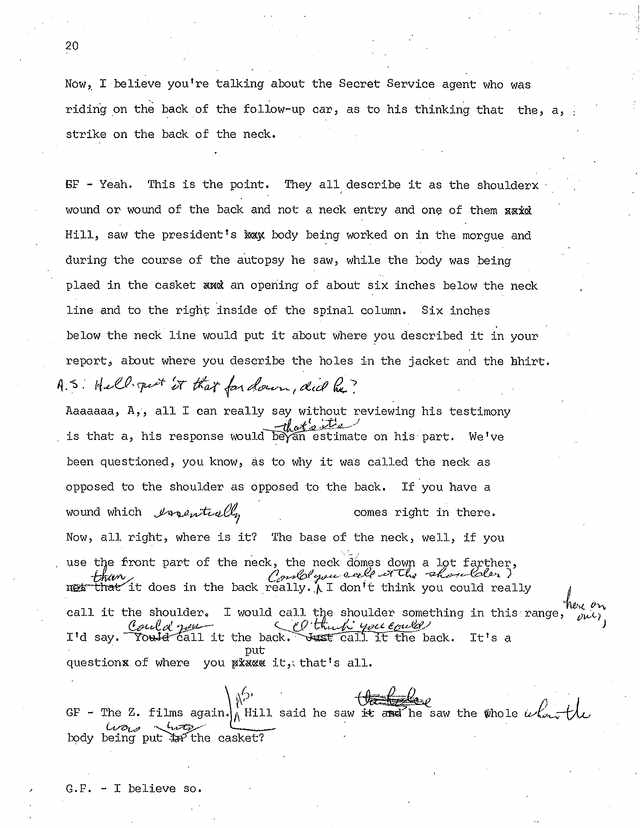
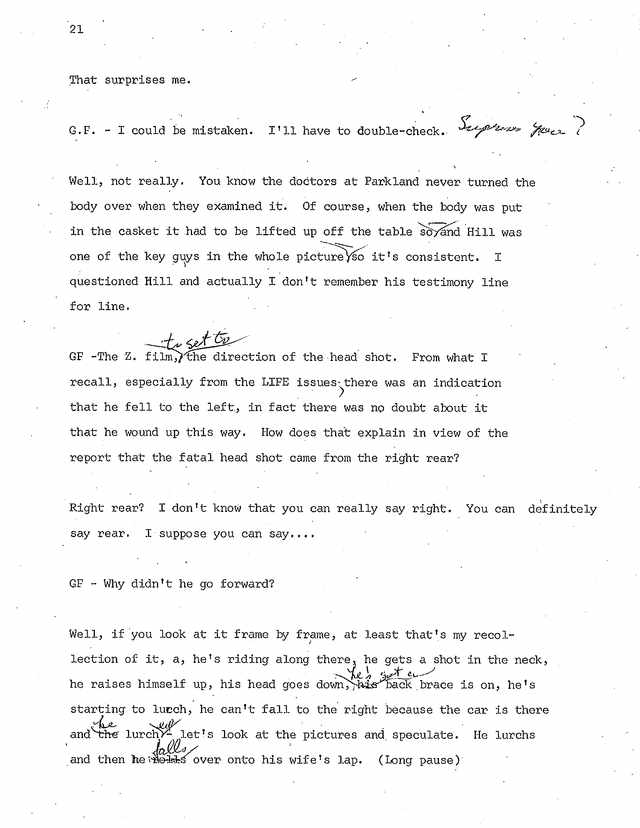
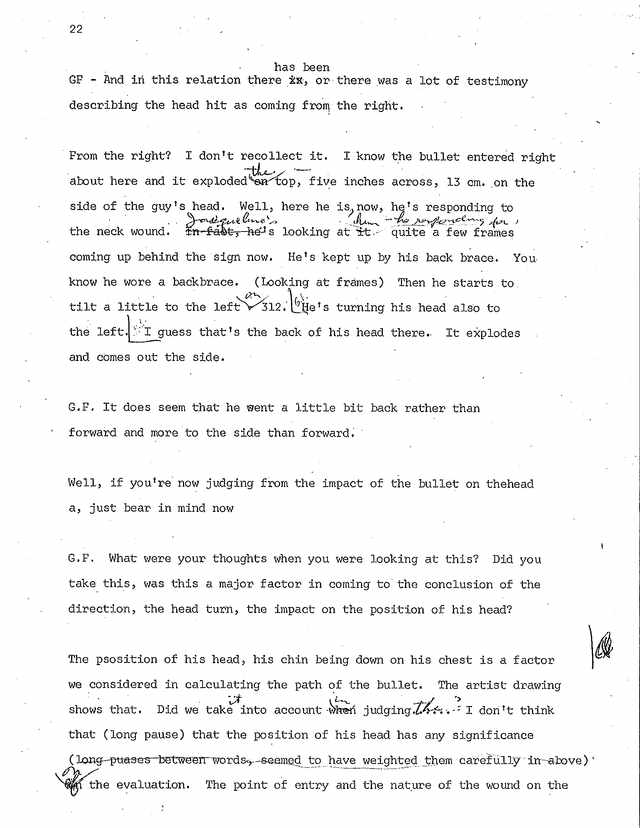
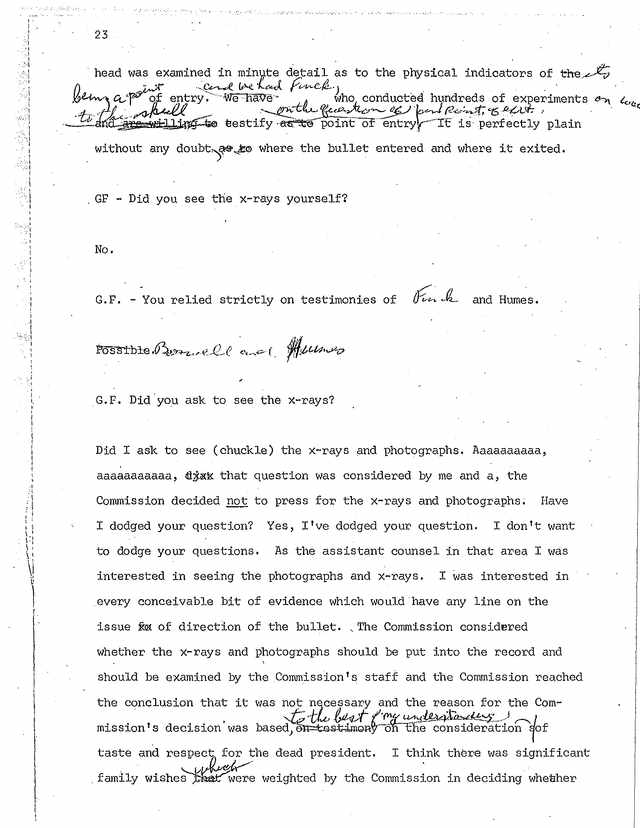
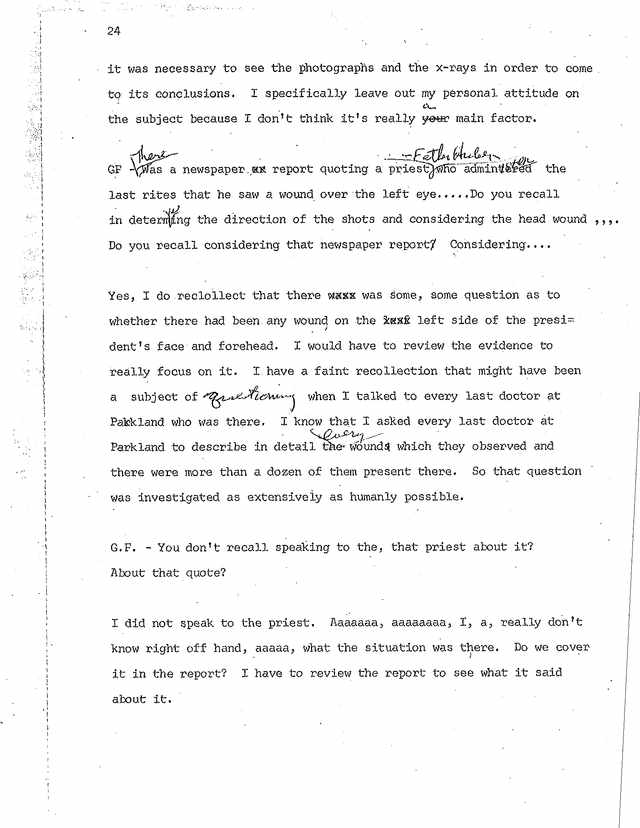
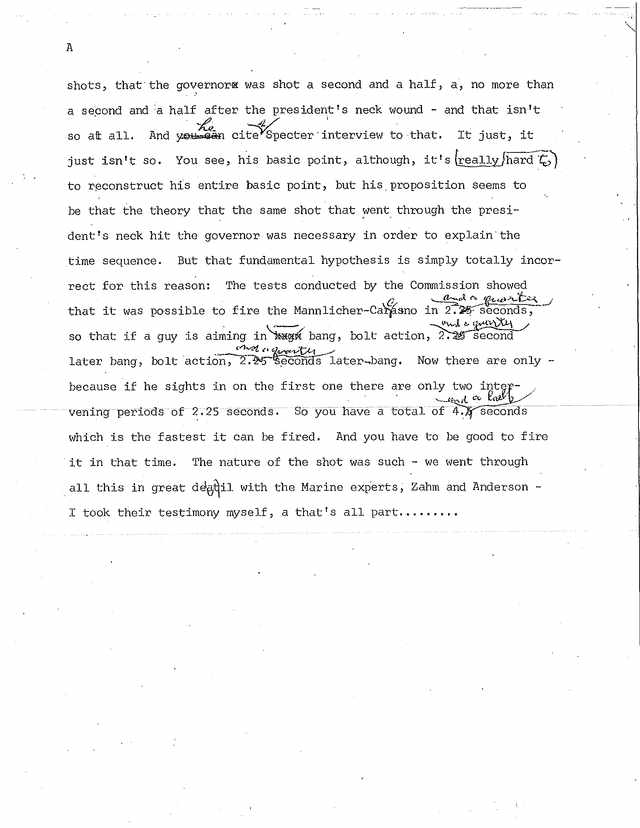
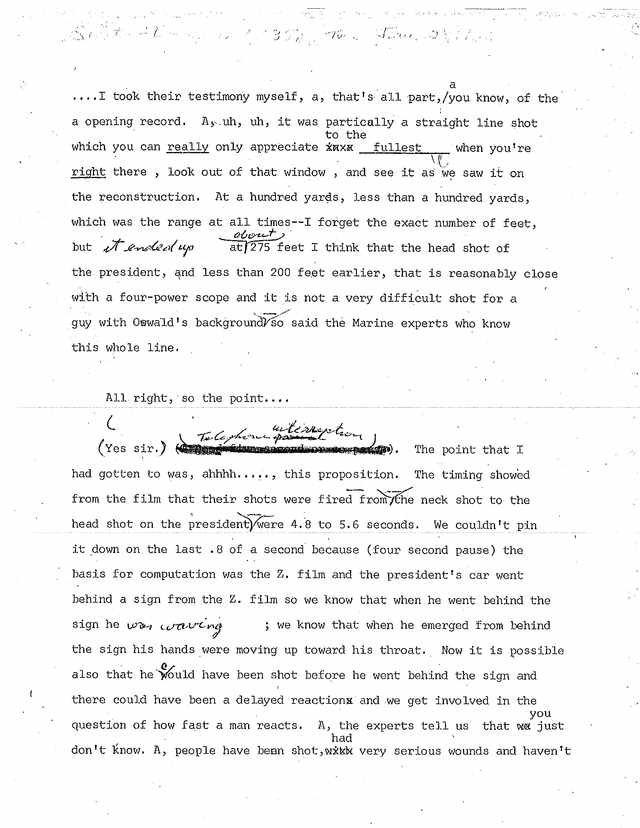
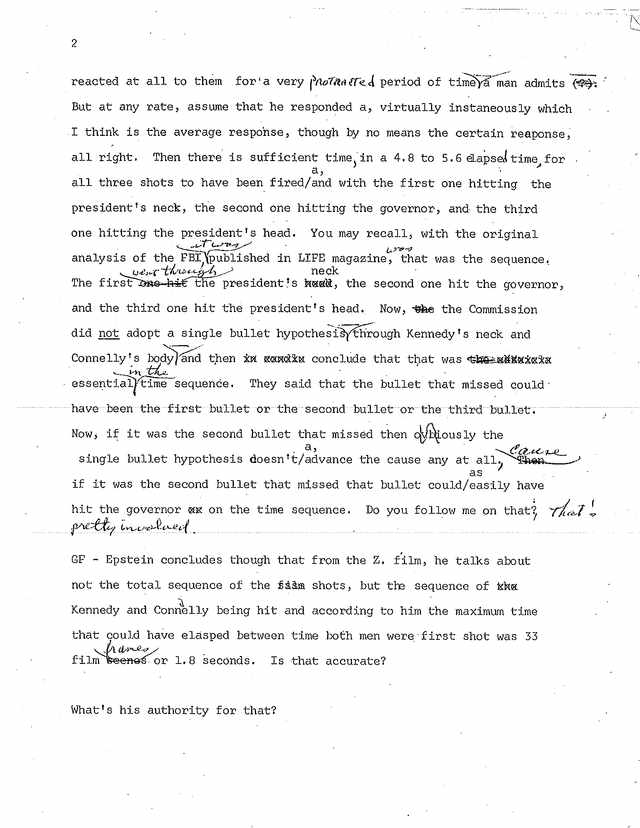
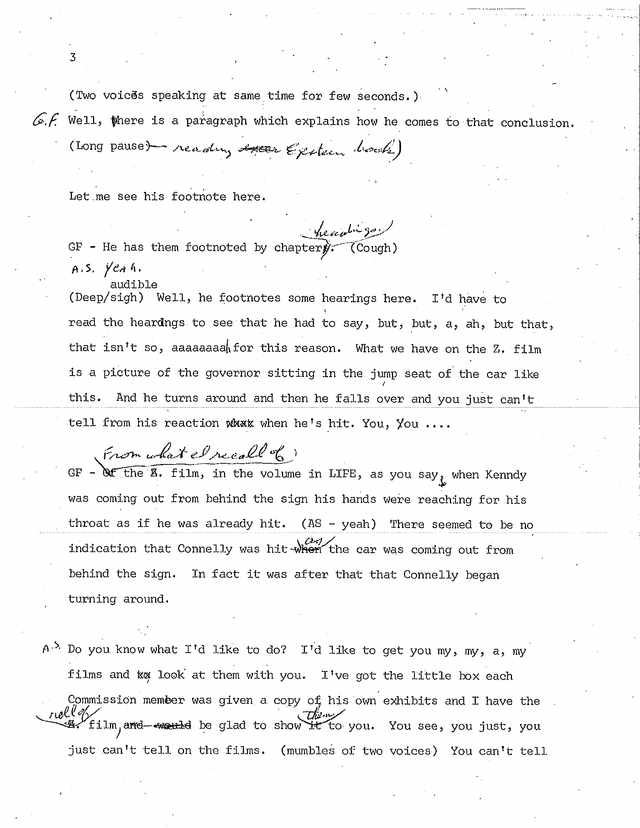
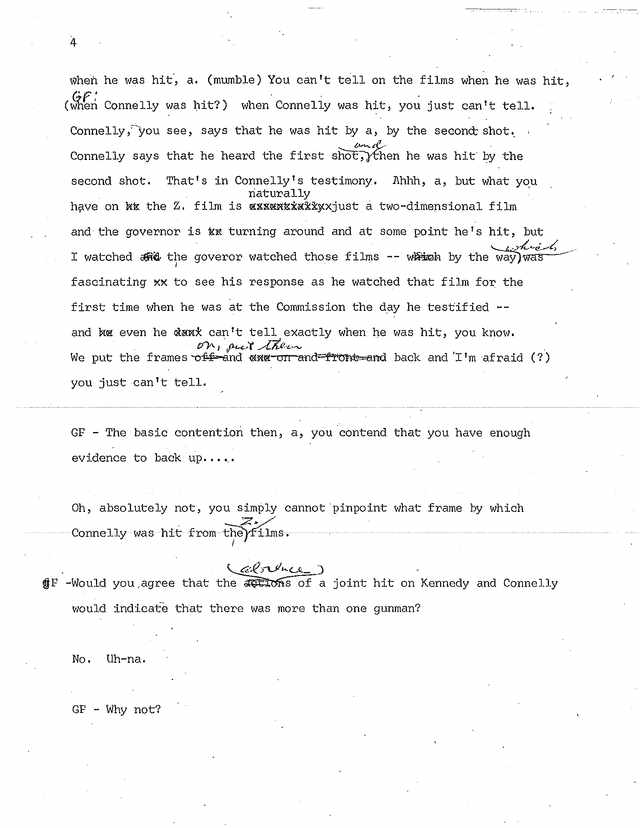
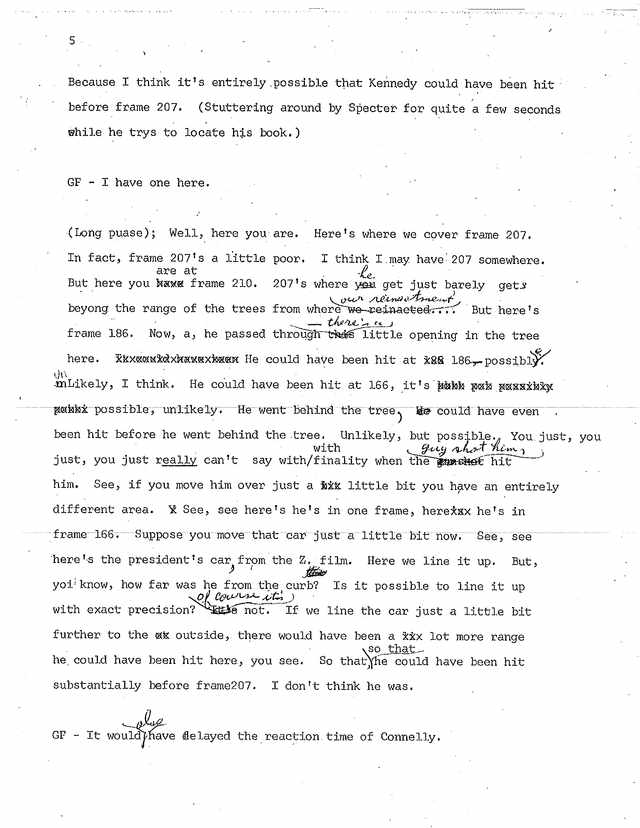
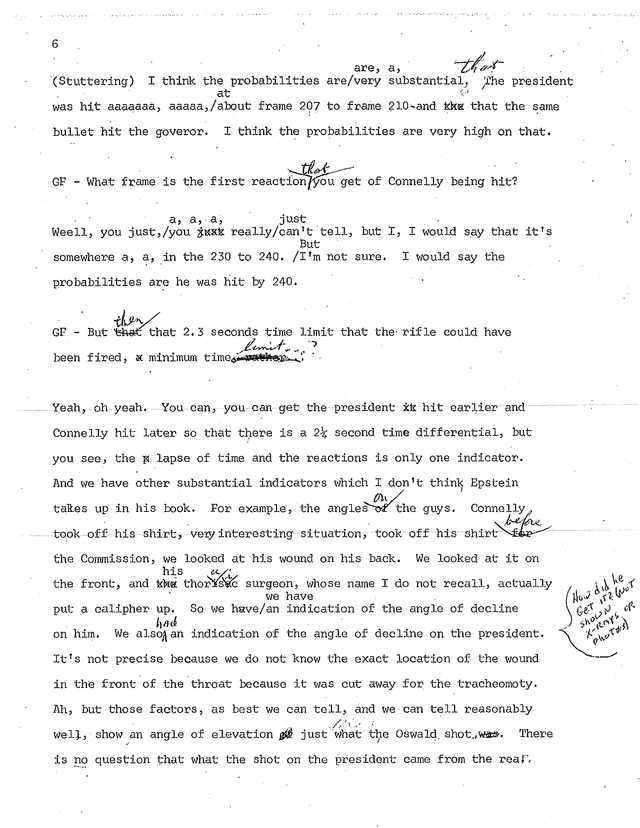
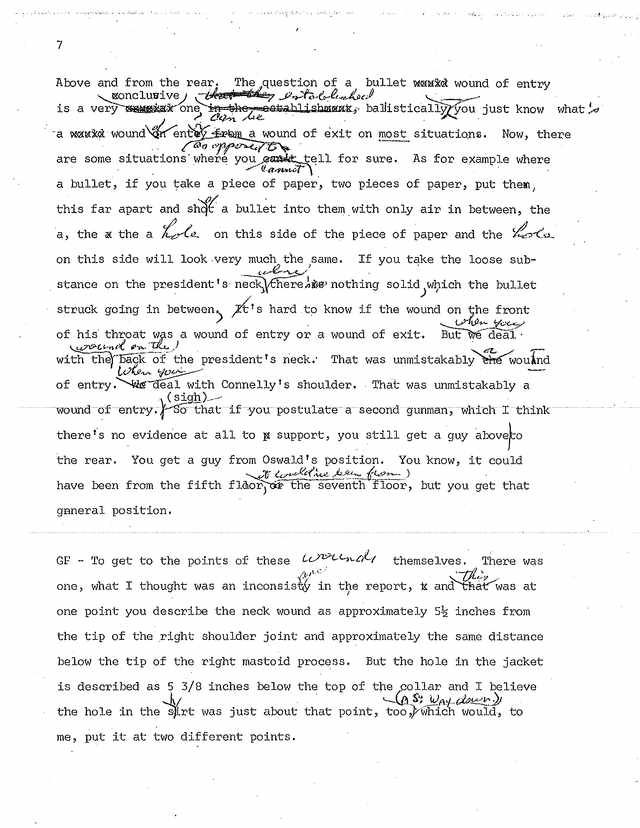
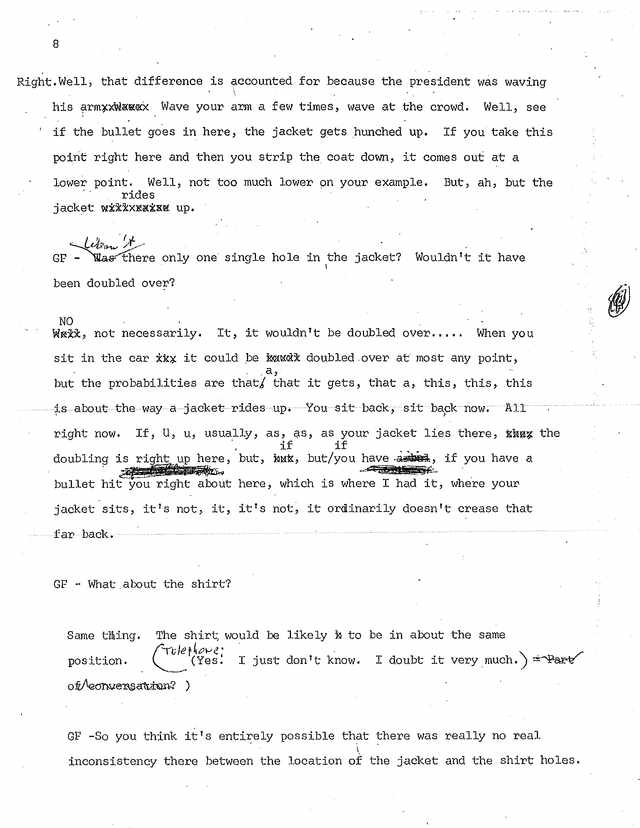
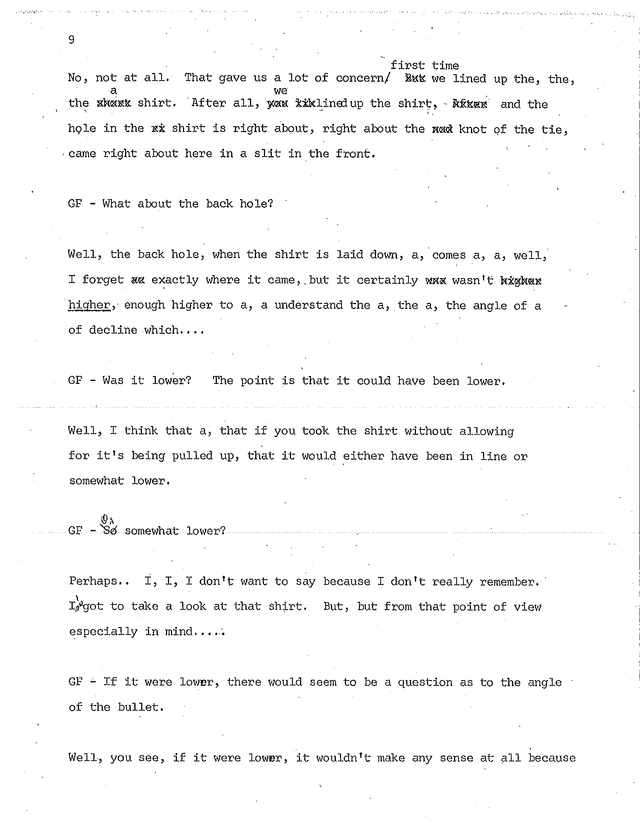
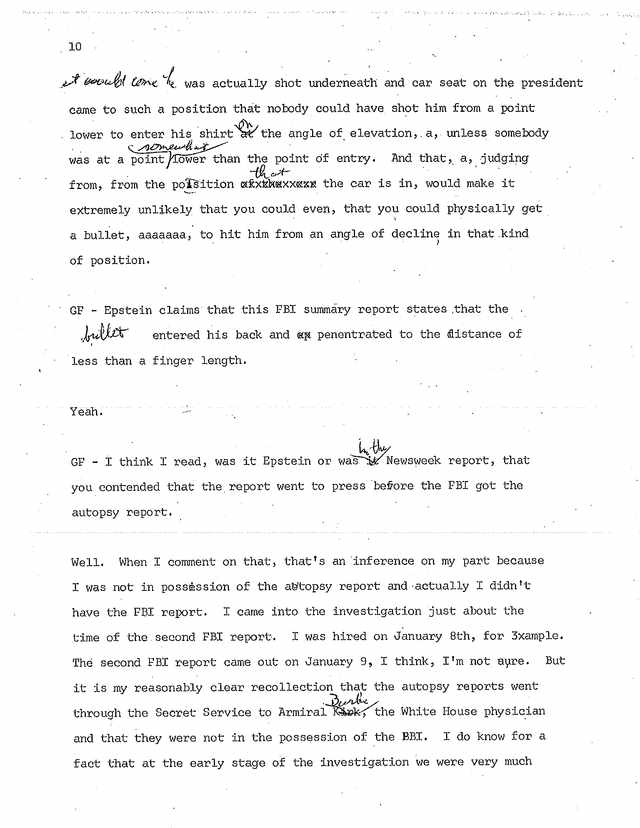
| bolster his controversial theory by posing
the following questions to Perry:
Mr. Specter: “Based on the appearance of the neck wound alone, could it have been either an entrance or an exit wound?” Dr. Perry: “It could have been either.” Mr. Specter: “Permit me to supply some additional facts, Dr. Perry, which I shall ask you to assume as being true for purposes of having you express an opinion. “Assume first of all that the President was struck by a 6.5 mm. copper-jacketed bullet fired from a gun having a muzzle velocity of approximately 2,000 feet per second, with the weapon being approximately 160 to 250 feet from the President, with the bullet striking him at an angle of declination of approximately 45 degrees, striking the President on the upper right posterior thorax just above the upper border of the scapula, being 14 cm. from the tip of the right acromion process and 14 cm. below the tip of the right mastoid process, passing through the President's body striking no bones, traversing the neck and sliding between the large muscles in the posterior portion of the President's body through a fascia channel without violating the pleural cavity but bruising the apex of the right pleural cavity, and bruising the most apical portion of the right lung inflicting a hematoma to the right side of the larynx, which you have just described, and striking the trachea causing the injury which you described, and then exiting from the hole that you have described in the midline of the neck. “Now, assuming those facts to be true, would the hole which you observed in the neck of the President be consistent with an exit wound under those circumstances?” (Emphasis added) Dr. Perry: “Certainly would be consistent with an exit wound.”[79] |